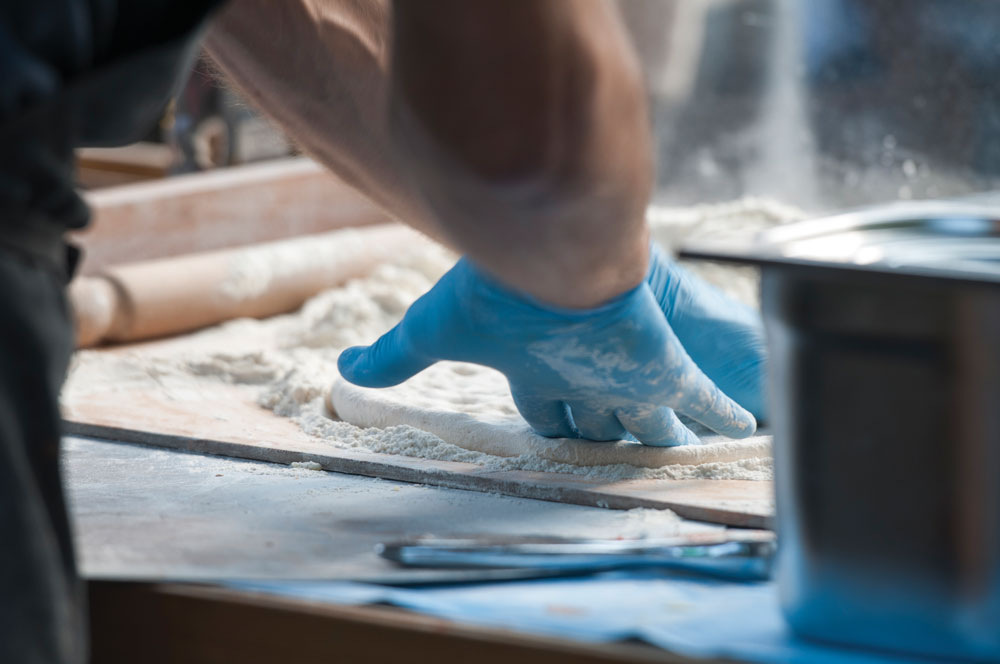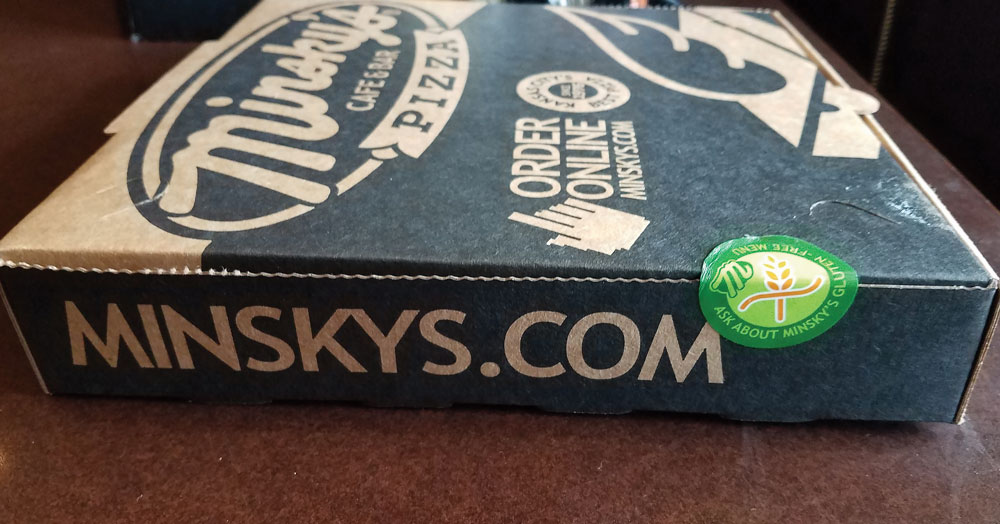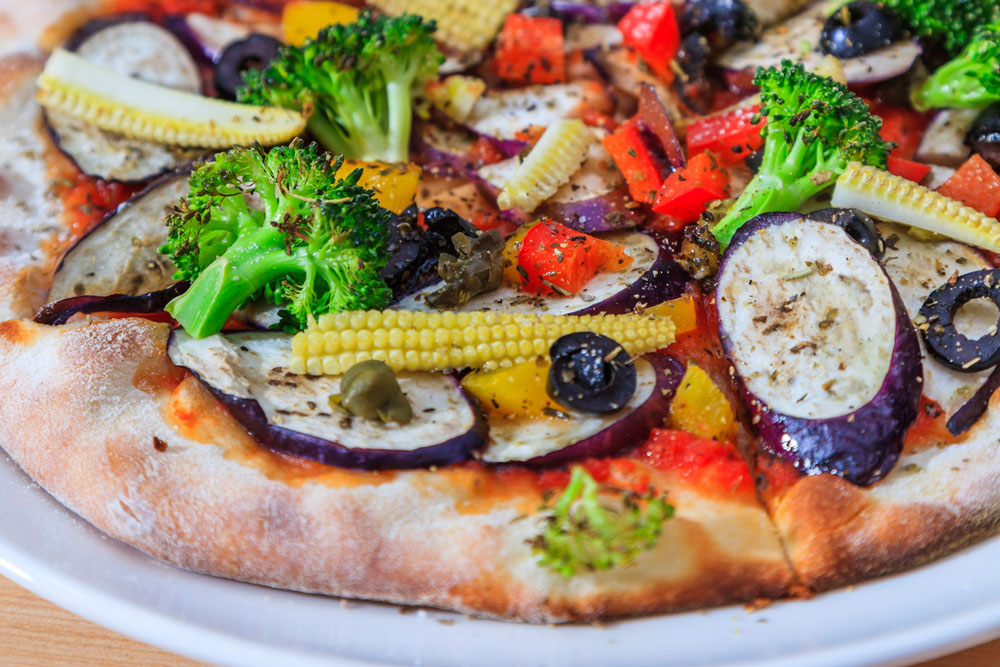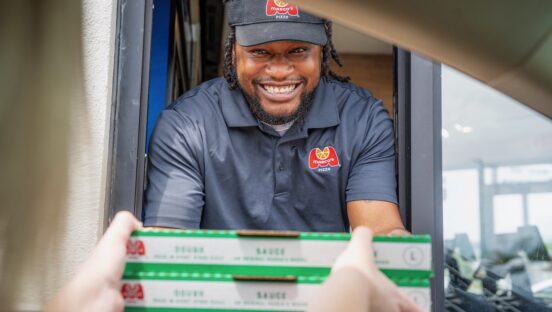About 3 million people suffer from celiac disease, with 49% saying they regularly sacrifice life experiences due to their gluten-free diet, according to Beyond Celiac, a nonprofit organization that educates people about the disease. In the past, it wasn’t uncommon to hear stories of pizza lovers driving for hours to find a gluten-free pizza. But as awareness has grown, more pizzerias offer gluten-free options to keep those customers closer to home. Nowadays, most celiac sufferers can enjoy a gluten-free pizza without ever leaving town.
But many pizzeria operators still have a lot to learn about gluten-free safety, the risks of cross-contamination, and making celiac sufferers feel comfortable and confident when they order from the menu. We spoke with celiac experts to find out what you can do to put gluten-intolerant customers at ease.
1 Train staff in proper gluten-free protocol. Rebecca Moreland, director of Lincoln, Nebraska-based GREAT Kitchens and a gluten-free market expert with Beyond Celiac, says it’s important to remind staff that celiac customers are putting their trust in the answers they receive from servers. “Servers need to be knowledgeable,” she says. “It doesn’t help to make it up. If they don’t know the answer, they should get a manager or someone who does.”
“All staff should understand the importance of preventing cross-contact when preparing gluten-free orders,” agrees consultant Jennifer D. Harris, owner of Gluten Free Go-To Guide in Norcross, Georgia. “There should be a way to note ‘allergy’ orders in the system that alerts the kitchen staff. It takes a very small amount of gluten to cause a reaction that can take more than a month of recovery [for your customer].”
Safe handling protocols can help train staff on the importance of preventing cross-contact during preparation, Harris adds. “Once compiled, this list can be laminated and posted in the kitchen for easy access. Some of the important protocols to observe include changing gloves and washing hands, and changing aprons if flour is present.”
—Rebecca Moreland, GREAT Kitchens and Beyond Celiac
 |
|
To prevent cross-contamination of gluten-free menu offerings, every employee should be trained in safe handling protocols. |
2 Research your gluten-free offerings. Before labeling your menu, check the ingredients in each item to ensure that it truly is gluten-free. Some salad dressings and even seasonings contain gluten. Consult an expert as needed. “If you’re going to add an item to the menu, take the time to research every ingredient,” Harris says. “As a celiac, it’s annoying to go to a pizzeria and ask which toppings are gluten-free only to be met with blank stares.”
Moreland agrees. “A lot of people think wheat and gluten are synonymous, and they’re not,” she points out. “Wheat, rye and barley are the main gluten ingredients. Barley can be hidden in a lot of things, even meats, and it’s not always on the label.” Moreland notes that cheeses can have a gluten coating, and sauces, such as barbecue and teriyaki, as well as spices, seasonings and salad dressings, can also contain gluten. “It’s not just about taking bread off the plate,” Moreland says. “You really have to know what you’re looking for in these ingredients. It can be difficult if you aren’t working with a dietician.”
3 Clearly label gluten-free items on your menu. “The best way to identify gluten-free items on a menu is to use a ‘GF’ next to each item with an explanation of the term at the bottom of the menu,” Harris says. “Having a separate gluten-free menu is also a good alternative.”
If you do have a separate gluten-free menu, announce it, Moreland says. “Mention the separate gluten-free menu on your regular menu as well as on your website, phone messages, takeout and delivery menus,” she says. “That person may not be gluten-free, but someone in their family may need the option.”
4 Go a step beyond gluten-free crust. “There’s more to gluten-free than crust and a surface,” says Moreland. “There need to be standard operating procedures and controls in place, so you know that, when a gluten-free order comes in, there’s a protocol to handle it.”
Moreland suggests taking the gluten-free order first or last and documenting it on the ticket as well as on the POS. “The gluten-free order should be noted all the way through the ordering process,” she says. “It used to be very obvious which one was the gluten-free pizza, but now you may want to brand it in some way, such as with a special parchment, plate, sticker, etc., and let the customer know what to look for when it comes out of the kitchen so they know it’s gluten-free.”
—Jennifer D. Harris, Gluten Free Go-To Guide
5 Create a separate preparation area and ingredients. According to Harris, the best way to avoid cross-contamination in the kitchen is to have a separate preparation area with clean utensils and dedicated ingredients. If that’s not feasible, creating a preparation space in the walk-in helps keep gluten particles at bay.
“Once a gloved hand has touched a gluten crust, it transfers particles to the glove, which then get transferred to whatever ingredients are touched,” Harris notes. “The same can be said for utensils. The best example is the ladle used for red sauce. This ladle touches the gluten crusts, then goes back into the container and contaminates the entire container.”
Harris suggests cooking the gluten-free crust on the top rack of an oven, or on a rack in a stone oven to keep it off of a shared surface. “The crust also needs to be cut with a dedicated cutter that’s kept in a container with a lid to ensure flour can’t get on it during the day,” she says.
Treat gluten the same way you would treat raw meat, Moreland says. “One of the first things people in foodservice learn is how to handle raw product,” she says. “So if they think of gluten as another hazard, it can be easier to think of how to put proper controls into place.”
6 Be transparent. Those with celiac disease do their research on websites and dining apps before they visit a restaurant. So Moreland stresses the importance of being transparent about your gluten-free offerings. “We see advertising of gluten-free on a menu or website, and then a customer shows up, and it’s really not fit for them,” Moreland says. “Be really clear about what you’re offering, so there’s no confusion. If there’s misinformation, it’s not helpful for you or them.”
“Understand why you’re offering gluten-free pizza and commit to keeping it safe from start to finish,” Harris advises. “If you’re adding it only to keep up with the latest diet trend, then you’re doing it for the wrong reasons, and the gluten-free community won’t support it. Be transparent, and the community will rally.”
 |
|
The Minsky’s Pizza chain touts its gluten-free menu with stickers on every pizza box. |
7 Expand your gluten-free menu. If you’ve got this gluten-free thing down, Moreland suggests offering a bit more by expanding your menu to be more inclusive. “If you have signature items that you’re known for or that are significant for your brand, see if you can mirror those as gluten-free options,” she says. “For example, if you serve breadsticks or a special dessert, maybe find an option for your gluten-free customers, too.”
|
Gluten-Free Innovations |
|
Some pizzerias, such as Chuck E. Cheese’s, now offer gluten-free pizzas that are virtually gluten contamination-proof. The frozen pizzas arrive in a sealed bag and go from freezer to oven to table without ever being exposed to the air around them. There also has been an influx of gluten-free beers, including domestic and craft varieties, entering the marketplace. But not all gluten-free beers are created equal, warns Rebecca Moreland, director of GREAT Kitchens and a gluten-free market expert with Beyond Celiac. “Always ask if the beer was made with only gluten-free ingredients as opposed to going through a process to remove the gluten,” she says. |















